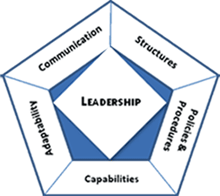Organisation Culture
A constructive culture in an organisation is a key part of delivering great business results. Constructive organisations are great places to work; they retain high quality employees, are innovative, have lower staff turnover and report better safety performance.
Tools and processes
We use the Human Synergistics:
- Organisation Culture Inventory (OCI) – hyperlink to content below
- Organisation Effectiveness Inventory (OEI); and
- Customer Service Styles Survey (CSSS) – hyperlink to content below
as our data gathering instruments to inform us about the current culture and the changes that will help to develop a more constructive place in which to work.
Ask us how we can support the development of a constructive culture in your organisation – hyperlink to PWS email
The Organisation Culture Inventory
The OCl provides a point-in-time picture of the culture of an organisation in terms of twelve key behavioural styles that are either effective or ineffective in helping the organisation reach its goals. It focuses on the behavioral patterns that members believe are required to “fit in” and “meet expectations” within their organisation. These twelve types of norms are organised into three general clusters that distinguish between:
- Constructive Cultures – in which members are encouraged to interact with people and approach tasks in constructive ways that will help them to meet their higher order satisfaction needs.
- Passive/Defensive Cultures – in which members believe they must interact with people in ways that will not threaten their own security.
- Aggressive/Defensive Cultures – in which members are expected to approach tasks in forceful ways to protect their status and security.
The Process
The measurement of an organisation’s culture using the OCI involves collecting data from people throughout the organisation on what the “ideal” culture would look like if it can be achieved as well as the current reality that employees face.
When the OCI results of all staff are combined, a profile of the shared behavioral expectations that operate across the organisation is obtained.
In measuring the “ideal operating culture” for an organisation it is possible to understand what members of the organisation believe should be expected of them to maximise individual performance and the long-term effectiveness of the organisation. The ideal norms can then be profiled against the actual or current norms to identify “cultural gaps”.
The Outcomes
Promoting and maintaining a culture that encourages effective behavior by staff requires clearly and consistently communicating expectations across all organisational levels. That’s why, in addition to helping to understand and assess the culture of the organization, the results provide an insight into how the organisation can move its current culture toward the ideal using various levers for change at the member/job, manager/unit, and organisational levels.
The Customer Service Styles Survey
Delivering a great customer experience is critical for organisational success. Great customer service comes from a unique blend of skills and behaviours, supported by empowering organisational systems and structures. Many organisations achieve limited improvement in customer service because they only focus on skills training, systems and structures, without addressing the predominant patterns of customer service behaviours that shape perceptions of quality and influence satisfaction, loyalty, and advocacy (word-of-mouth).
The Customer Service Styles™ Survey (CSSS) provides a unique perspective into these forces by measuring the service styles that impact the experience of customers as well as the effects of these styles on customers’ attitudes and future purchasing intentions.
The CSSS is a flexible tool for engaging employees and leaders in the imperative of improving service behaviours. Developed in a wide range of industry sectors, with internal and external customers, the CSSS quantifies the experience of customers.
The Process
The CSSS measures the way people in the organisation typically treat customers.
The inventory consists of 48 statements that describe some of the behaviours or “styles” that might be exhibited by sales representatives, customer service agents, or others who deal directly with customers.
These twelve Customer Service Styles are arranged on a circumplex similar to the other Human Synergistics circumplex diagnostics, such as the Life Styles Inventory (LSI) and the Organisation Culture Inventory (OCI).
For example, the Achievement Customer Service Style translates into solution-oriented and consistently good, solid customer service. Service providers do the job right the first time, suggest “extras” that anticipate the customer’s future needs, and work to meet the needs and expectations of both their organisation and the client.
In addition to assessing customer service styles, the CSSS measures different dimensions or aspects of service quality that can help to illustrate some of the implications of a service provider’s style:
- Customer satisfaction (including whether customers’ expectations were met)
- Customer loyalty (including whether customers intend to use the organisation’s products or services again)
- Customer advocacy (including whether customers would recommend the organisation to other potential customers or clients)
The Results
Once all customers’ data are collected, their feedback is compiled and presented in a report that contains customer service style profiles, service quality bar charts, and tables with the item-by-item results as well as interpretive information, comparative profiles, and recommendations.
The CSSS provides leaders and employees with powerful insights into their customers’ experience. Armed with this data, collaborative analysis and action planning can produce tangible improvements to the way customers are treated. After 12-24 months, the CSSS can be used to assess the impact of change initiatives on customers.
Ask us about how we can support your initiatives to build a more constructive culture – hyperlink to PWS email




 Click here to see more about how the elements of our approach to developing effective organisations fit together
Click here to see more about how the elements of our approach to developing effective organisations fit together
